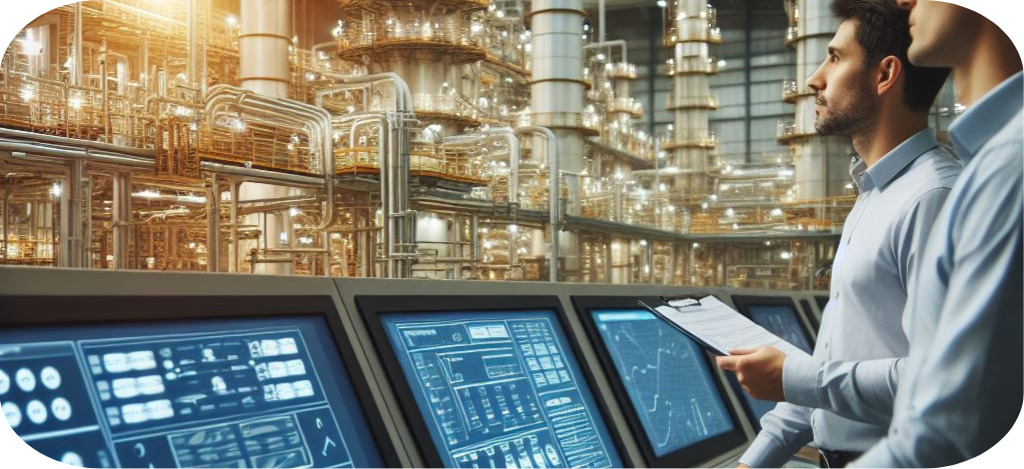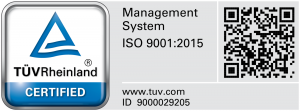

In today’s rapidly advancing world, energy efficiency is a top industry priority. The ability to control and convert power effectively is essential from industrial automation to renewable energy. Two key devices that have revolutionized how we manage electricity are power inverters and converters. These devices are integral to systems ranging from electric vehicles (EVs) to solar power installations, ensuring energy is used efficiently, safely, and reliably.
As technology evolves and the demand for sustainable energy grows, businesses must understand the importance of these devices and their wide-ranging applications. Inverters and converters play a critical role in modern infrastructure, providing a seamless flow of energy in various forms and ensuring uninterrupted power for systems that require precision. This article explores what power inverters and converters are, their differences, and how they support key industries. We will also showcase products from leading global brands—DEIF, Mitsubishi Electric, Rockwell Automation, and Weidmüller—and how their cutting-edge technology can optimize energy systems.
| INVERTER | CONVERTER | |
| What It Is | Electrical devices convert Direct Current (DC) into Alternating Current (AC). | Electrical devices convert voltage from alternating current (AC) to direct current (DC). |
| Types | 1. Square Wave Inverter 2. Pure Sine Wave Inverter 3. Modified Sine Wave Inverters | 1. Analog-to-digital converter (ADC) 2. Digital-to-analog converter (DAC) 3. Digital-to-digital converter (DDC) |
| Applications | Solar panels, batteries, or cell fuel | Electronic devices |
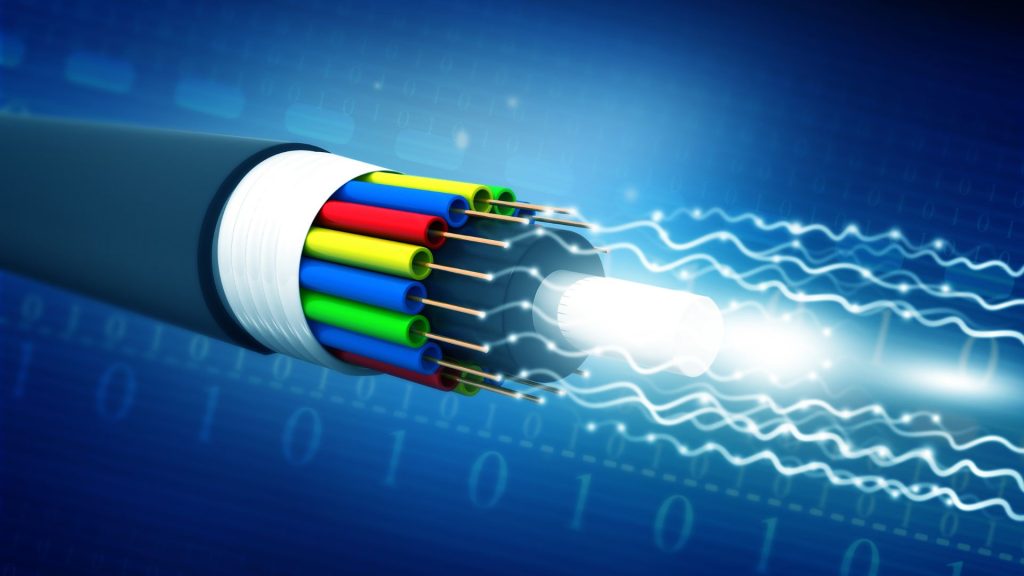
An inverter is an electrical device that converts Direct Current (DC) into Alternating Current (AC). DC power is typically generated by renewable energy sources such as solar panels or batteries. However, most electrical grids and home appliances operate on AC power. Inverters are vital in ensuring that the DC power generated can be used in these environments by converting it to AC.
Inverters are found in a variety of applications across numerous industries, playing a crucial role in energy management. Some key applications include:
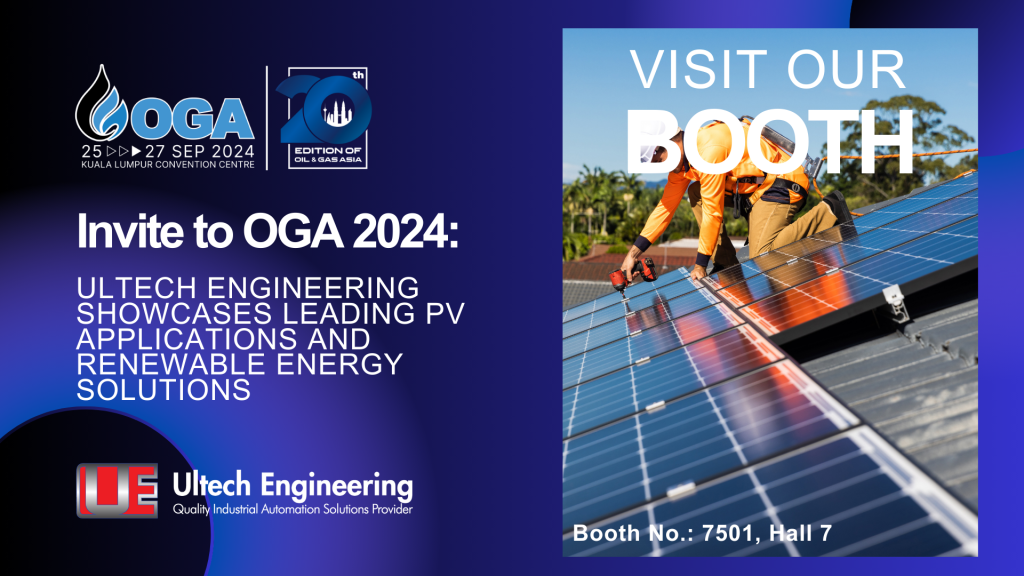
Inverters are essential in solar power setups, where the energy generated by photovoltaic (PV) cells is Direct Current (DC). To make this energy usable for household appliances and integrate it into the electrical grid, inverters convert DC power into Alternating Current (AC). This conversion enables the efficient use of solar energy in homes and contributes to the grid's stability by allowing excess energy to be fed back into the system.

In UPS systems, inverters are critical for providing a seamless transition between battery power and grid power during outages. When the grid's power supply is interrupted, the inverter quickly converts stored DC power from the battery into AC power, ensuring that sensitive electronics and critical systems remain operational without any downtime. This functionality is especially important in healthcare, data centers, and telecommunications sectors, where continuous power supply is essential.
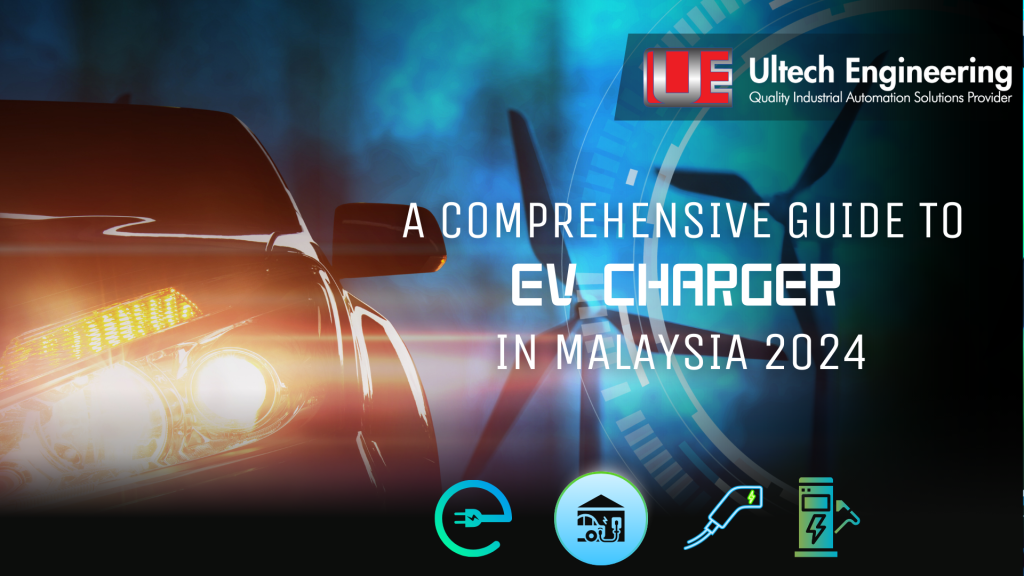
Inverters play a vital role in electric vehicles (EVs) by converting stored Direct Current (DC) power from the vehicle’s batteries into Alternating Current (AC) power to drive the electric motors, enabling efficient propulsion and smooth operation. Advanced inverter technology enhances performance and energy efficiency while supporting regenerative braking systems that capture kinetic energy during braking and convert it back into stored energy, extending the vehicle’s range.
Additionally, EV chargers are essential components of the electric vehicle ecosystem, converting AC power from the grid into DC power suitable for recharging the vehicle's batteries. With various types of chargers available—such as Level 1, Level 2, and DC fast chargers—these systems work together to ensure that electric vehicles are efficiently powered and ready for the road, offering a seamless experience for EV owners.
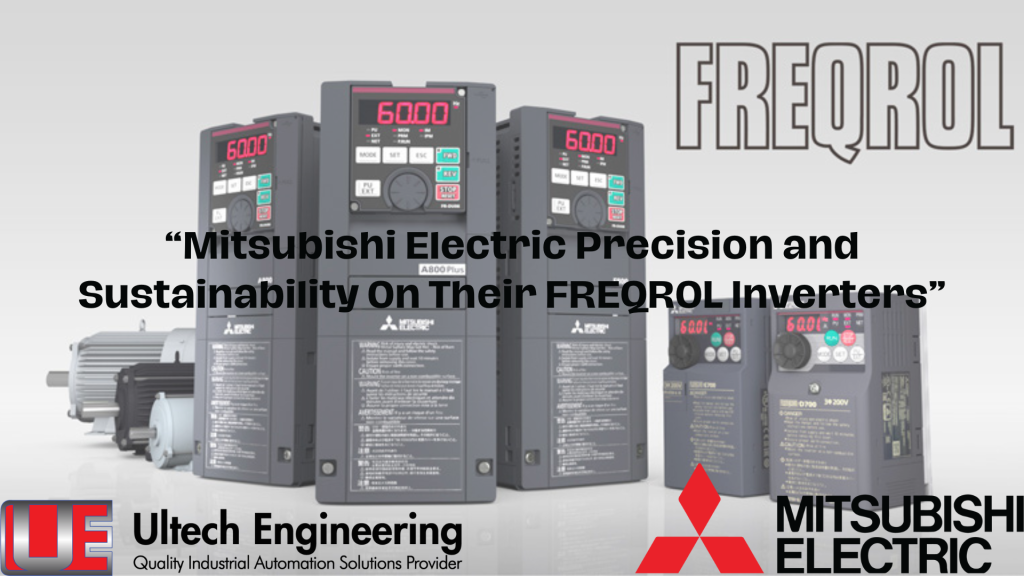
In industrial settings, inverters are used to control AC motors and enhance process automation. By converting DC power to AC, inverters allow for precise speed and torque control in machinery, optimizing performance and energy consumption. This capability is essential for applications ranging from conveyor systems to robotics, where efficiency and reliability are paramount.
This type of inverter generates a square wave output, making it the least commonly used among other inverters since most devices are designed for sine wave power. Supplying square wave power to equipment meant for sine wave operation can lead to damage or significant energy loss. While it is a low-cost option, its applications are limited, typically suited for basic tools equipped with universal motors.
The output of this inverter is a sine wave, closely matching the standard utility power supply. This is a significant advantage because most appliances are designed to operate on sine wave power, ensuring they function correctly and efficiently. Although these inverters are more expensive, they are commonly used in both residential and commercial settings due to their reliability.
Modified sine wave inverters generate an AC output that mimics a sine wave using a stepped approximation. Although the resulting waveform is not as smooth as that of pure sine wave inverters, they offer a budget-friendly and simple solution for many uses. However, the less refined waveform may not be ideal for powering sensitive electronic devices.
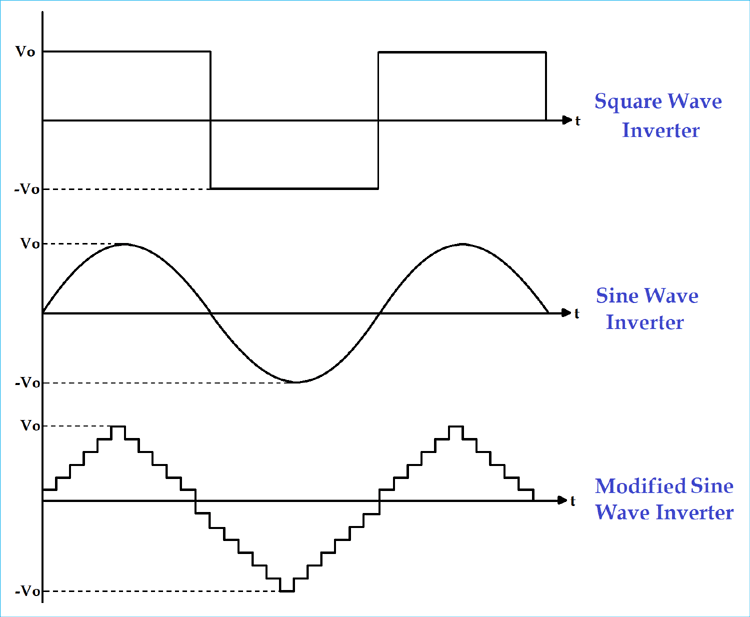
A converter, on the other hand, is an electrical device that converts electrical energy from one form to another. Electrical devices that convert the voltage from alternating current (AC) to direct current (DC). These devices are widely used in applications where the power supply from the grid (AC) needs to be transformed into a lower-voltage DC for use in specific equipment.
Converters are essential for a wide range of applications across various industries, playing a crucial role in ensuring the efficient operation of electronic devices and systems.
Converters take the Alternating Current (AC) power supplied by the grid and transform it into stable DC power, enabling these devices to operate efficiently and reliably. To function properly, electronic devices such as computers, mobile phones, and LED lighting are powered by direct current (DC) power.
Converters are responsible for regulating the flow of AC power from the grid into a stable DC, ensuring that batteries are charged safely and effectively. This regulation is particularly important in applications such as electric vehicles (EVs), where maintaining the right charging voltage and current is essential for battery health and longevity. By preventing overcharging and ensuring optimal charging conditions, converters help extend the life of batteries.
Converters are critical for voltage regulation, as they can step down high-voltage AC to low-voltage DC for sensitive electronics used in industrial systems. This capability is essential in applications where electronic components require precise voltage levels to operate without damage. Converter helps maintain stable voltage levels, reducing the risk of malfunction and ensuring that industrial processes run smoothly. Overall, converters are indispensable in modern technology, facilitating the efficient operation of countless devices and systems.
Analog-to-digital converter (ADC) is a device that converts the input analog voltage to a digital number proportional to the magnitude of the voltage or current. Some non-electronic or partially electronic devices, like rotary encoders, can be considered as ADCs.
Digital-to-analog converter (DAC) is a device that converts a digital input to an analog output. DAC are found in CD players, digital music players, and PC sound cards.
Digital-to-digital converter (DDC) is a device that converts one type of digital data to another type of digital data.
The importance of inverters and converters cannot be overstated in today's technology-driven world, as they play a fundamental role in modern energy systems' efficient and safe operation.
The inverters and converters are crucial for optimizing energy usage, ensuring that power is converted with minimal loss, and improving the overall efficiency of energy systems. Inverters help solar power systems maximize their output by converting DC energy generated by photovoltaic panels into usable AC power, enhancing the system's overall performance. Meanwhile, converters are essential for adjusting voltage levels in various electronic devices, ensuring that the right amount of power is delivered without excess energy waste. This efficiency translates into lower energy costs and a reduced carbon footprint.
A reliable power supply is essential in power-critical applications such as hospitals, data centers, and industrial operations. Inverters provide dependable AC power from backup sources, such as batteries or generators, ensuring continuous operation during outages or fluctuations in the main grid. At the same time, the converter plays a key role in delivering the correct power to sensitive equipment, safeguarding it from potential damage due to voltage inconsistencies. Their ability to stabilize power in challenging conditions is vital for preventing disruptions and costly downtime.
With the growing adoption of renewable energy, the demand for efficient inverters and converters is more significant than ever. These devices are crucial for seamlessly integrating renewable sources, like solar and wind, into the electrical grid. Inverters facilitate the conversion of DC power from renewable energy systems to AC power suitable for grid use, enabling households and businesses to contribute clean energy to the grid. This helps reduce the reliance on fossil fuels and accelerates the shift towards a more sustainable and eco-friendly energy landscape.
Voltage regulation provided by converters is essential for protecting electronic devices from power surges, voltage fluctuations, and other irregularities that could lead to damage. Inverters ensure a smooth and consistent energy flow for grid-tied and backup systems, preventing sudden disruptions that could harm infrastructure or cause failures. These protective measures safeguard individual devices and contribute to the stability and safety of larger energy networks, enhancing resilience against power disturbances.
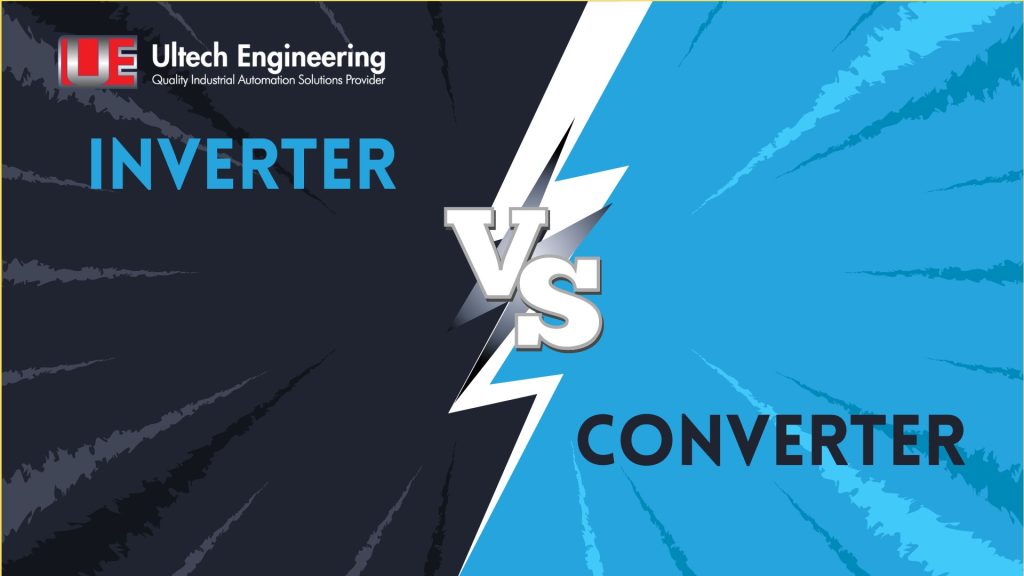
By using advanced power inverters and converters from trusted global brands like DEIF, Mitsubishi Electric, Rockwell Automation, and Weidmüller, businesses can significantly enhance their energy management and operational efficiency. These cutting-edge solutions are designed to meet the growing energy demands of today’s industries, offering precision control, reliability, and sustainability.
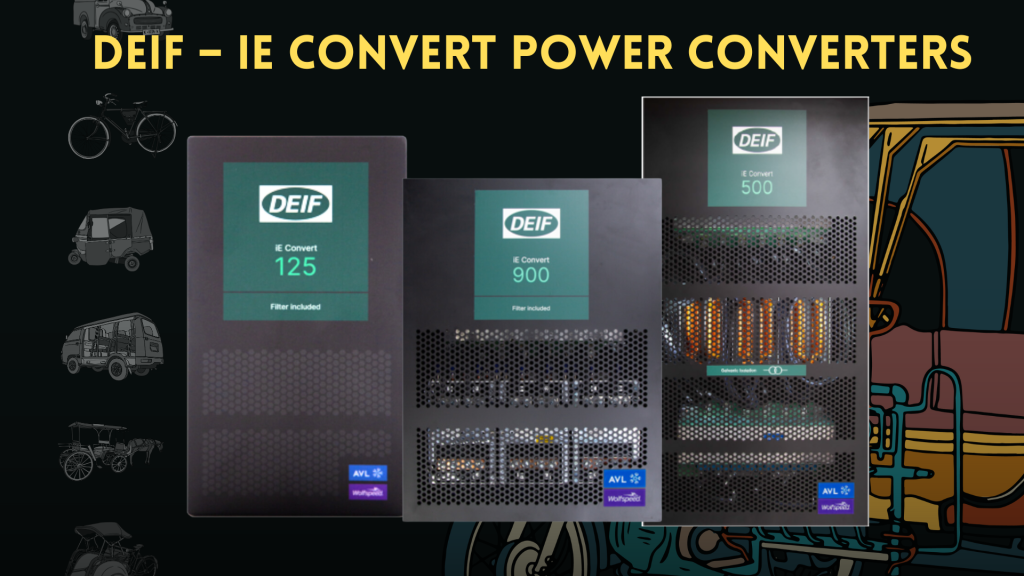
Introducing the iE Convert range, a cutting-edge series of power converters designed to drive the next generation of high-efficiency energy solutions both on land and at sea. Built on advanced silicon carbide (SiC) technology, these converters offer superior performance with reduced energy loss, significant space savings, and optimized cooling requirements. Ideal for a wide range of applications, the iE Convert range ensures seamless energy exchange between AC and DC systems, making it suitable for hybrid power plants, energy storage, marine shore connections, and more.
Manufactured in Europe at our state-of-the-art facility in Skive, Denmark, the iE Convert range combines innovative technology developed with our partner AVL and high-quality power electronic components from Wolfspeed, a leader in SiC technology. These converters are designed to deliver pure, grid-compliant energy with high switching frequencies, enabling reliable performance for critical energy systems and diverse applications.
Introducing the products under iE Convert Power Converters:
The iE Convert 125 is a small and cost-efficient power converter designed for high-efficiency power conversion in a compact form. Its flexible configuration allows multiple units to be combined, achieving up to 1 MVA of conversion capacity for both land and marine applications.
The DEIF iE Convert 125 power converter offers efficient power conversion in a compact design, making it ideal for various land and marine applications. It provides 125 kVA of output power at 800, 1300, or 1500 VDC. Up to 8 units can be combined to achieve higher power capacities.

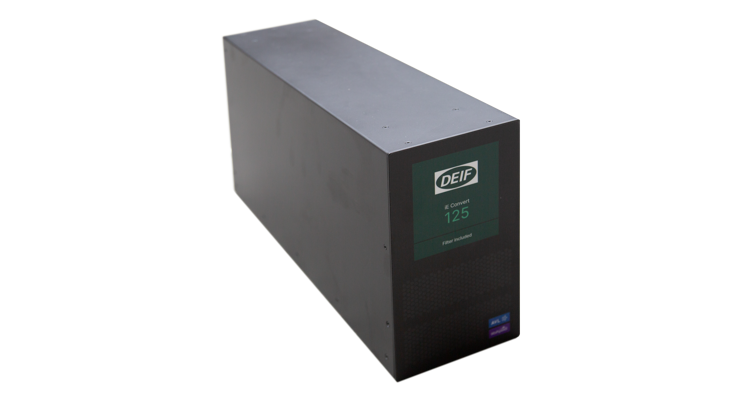
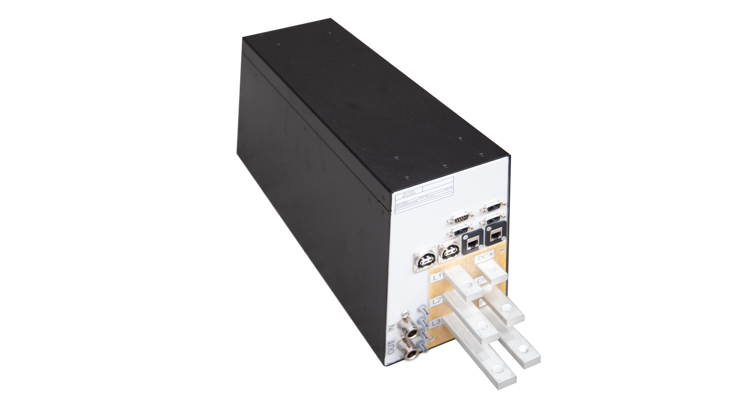
a. Cost-effective and Flexible
The iE Convert 125 is about 60% smaller than IGBT-based converters, making it easy to fit into tight spaces. Its compact design allows for flexible use in customized energy solutions for both land and marine applications.
b. High-Efficiency Grid-Ready Power
The iE Convert 125 achieves much higher switching frequencies using advanced silicon carbide technology than IGBT converters. This results in clean power output that can be directly supplied to your load or grid. Built-in filters meet most requirements, so extra filters are rarely needed.
c. Low Energy Loss
The iE Convert 125 minimizes energy loss, with only 3-4% lost as heat during conversion compared to 6-7% in IGBT designs. This improved efficiency is due to the silicon carbide technology, enhancing energy transfer, storage, usage, and sales.
d. Versatile Control Options
The iE Convert 125 can connect to a DEIF controller, PLC, or similar systems using EtherCat for energy management. It also supports seamless PLC integration through CODESYS and allows for simulation using MATLAB.
The iE Convert 500 and 900 are high-efficiency modular power converters designed for versatile energy control in both land and marine applications. Featuring high switching frequencies, low heat loss, and significant space and weight savings, these converters deliver 900 kVA (1500 VDC) and support bi-directional power conversion. With multiple configurations available, the units can be customized to meet specific requirements. Additionally, several iE Convert 500 or 900 units can be paralleled to create multi-megawatt solutions, making them ideal for a wide range of power conversion tasks.
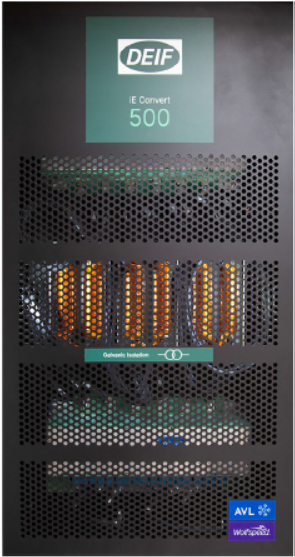

a. Low Energy Loss
The iE Convert 900 uses advanced silicon carbide technology, resulting in only 3-4% energy lost as heat, compared to 6-7% with IGBT designs. This boosts the efficiency of energy transfer, storage, usage, and sales.
b. Grid-Ready Power
With switching frequencies ranging from 50 to 100 kHz—much higher than IGBT designs—the iE Convert 500/900 delivers pure, noise-free power that can be directly supplied to loads or the grid.
c. Built-In Filters
The converters provide high-quality output, eliminating the need for extra filters in most applications. Built-in filters ensure smooth operation without additional components
d. Compact and Lightweight Design
Due to its efficient design, reduced heat loss, and built-in filters, the iE Convert 500/900 is up to 60% smaller and 4-8 times lighter than IGBT converters. This makes it ideal for tight spaces such as engine rooms and compact energy storage systems.
e. Configurable and Service-Friendly
The iE Convert 500/900 can be tailored to meet specific needs and comes mounted in an IP22 frame, ready for use. For higher IP ratings, it can be integrated into cabinets or racks. Side-mounted cooling plugs facilitate maintenance, and filters are easy to replace.
f. Multiple Control Options
Connect the iE Convert 500/900 to a DEIF controller, energy management system, or PLC via EtherCat. Seamless PLC integration is supported through the CODESYS platform, with MATLAB available for simulation and testing.
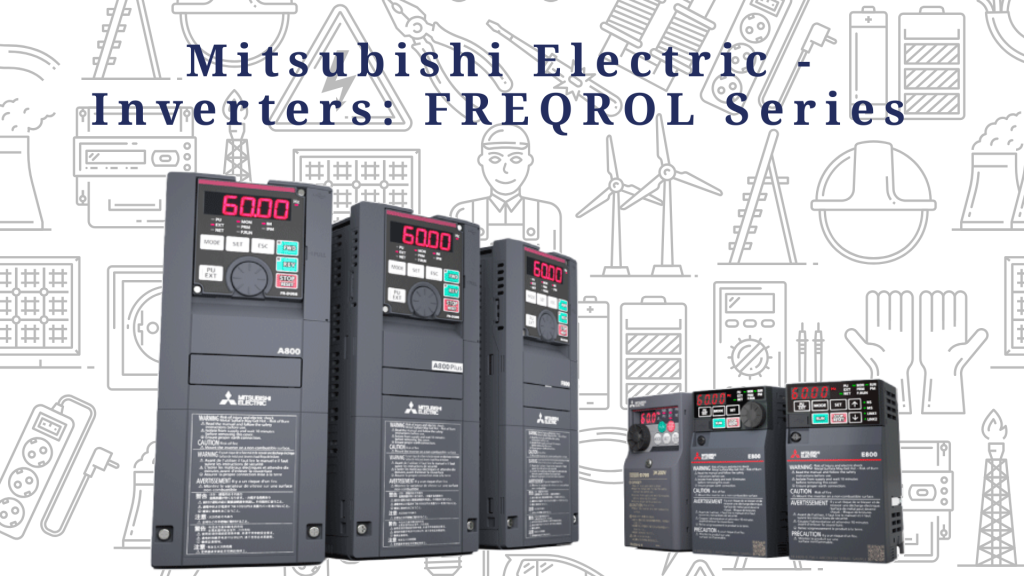
Inverters are variable frequency power supply units that allow easy and flexible adjustment of the rotation speed for three-phase induction motors. These high-performance, eco-friendly inverters comply with global standards and come in a wide range of models to suit different applications.
Introducing the products in the FR-A series, which deliver the highest drive performance in the FR lineup. The series features advanced real sensorless vector control and vector control, meeting the demands of various machinery types efficiently.
The new power inverter offers high performance and exceptional quality, setting a new standard in its class. It features enhanced drive capabilities and improved usability, while also meeting the relevant safety standards.
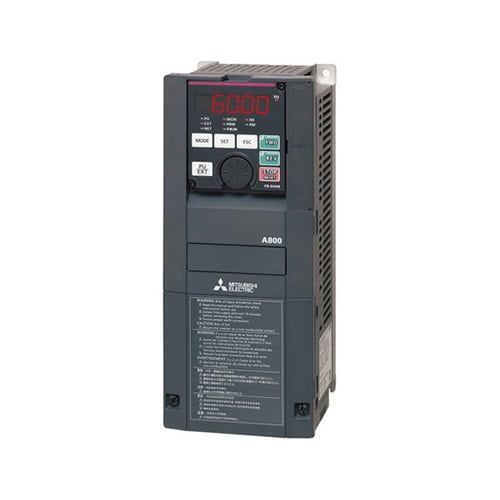
The FR-A800 Plus series is a dedicated inverter line designed for specialized applications, building upon the high performance and functionality of the FR-A800 series. This series features two models tailored to specific needs: the FR-A800-CRN and the FR-A800-R2R, each equipped with optimized functions for its respective field.
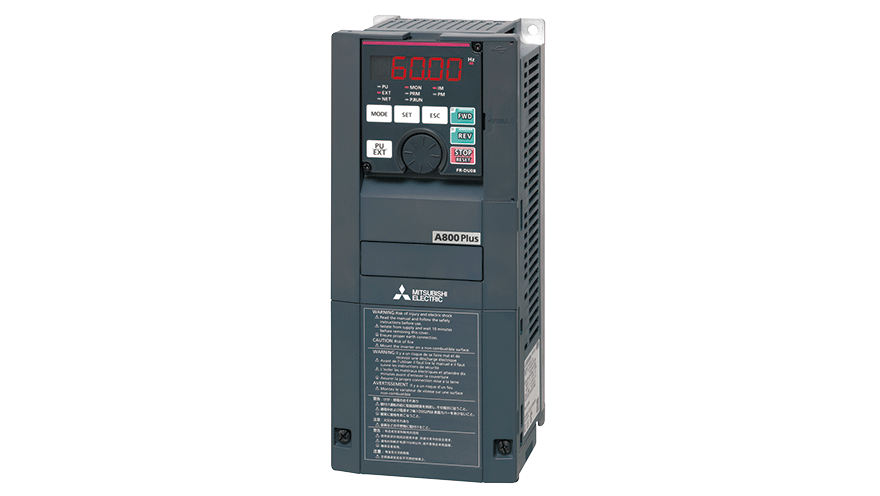
Inverter for fans, pumps, and air conditioning FR-F series. In addition to various energy-saving functions, functions ideal for fans and pumps are also equipped. The power inverter provides the solution to your further energy-saving needs.
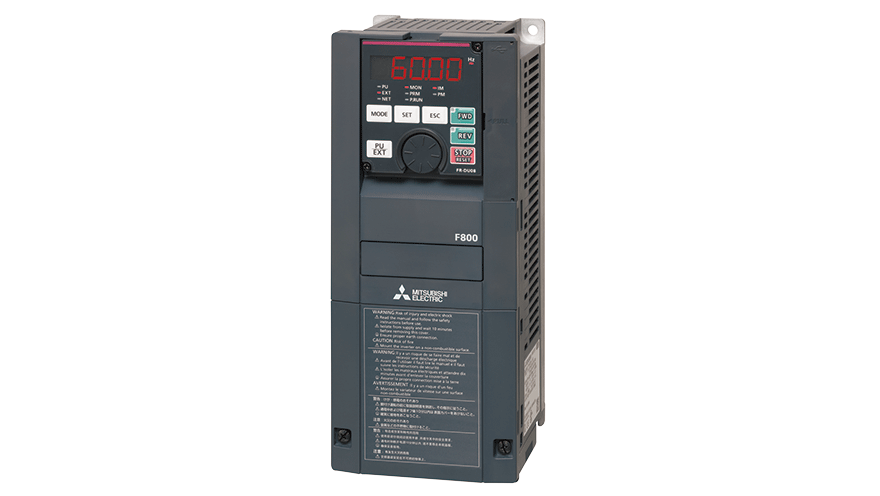
The FR-E series is a simple, powerful, and compact power inverter offering excellent usability and top-level performance. It’s an all-rounder designed to fit in small spaces, providing easy operation and versatile expandability while saving space.
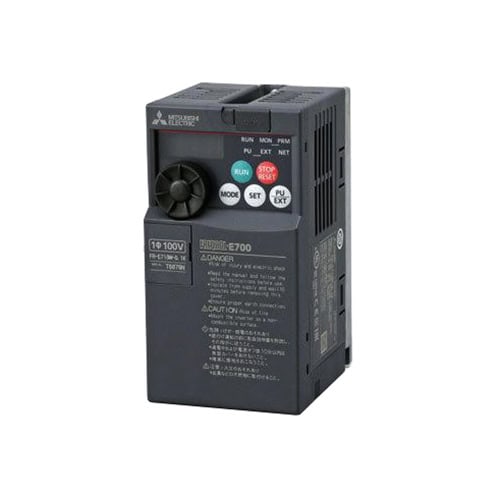
The FR-D series is an easy-to-use, compact power inverter that sets a new standard for Mitsubishi. It combines improved reliability and straightforward maintenance with enhanced usability and performance, making it a dependable choice for various applications.
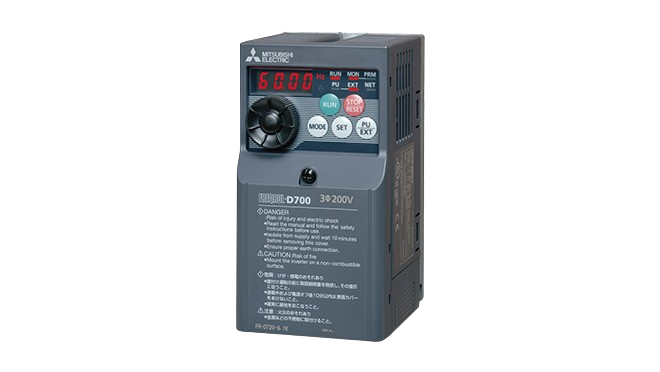
The FR-D series offers a compact and smart inverter solution, achieving one of the world's smallest sizes thanks to a low heat generation design. It allows for space-saving side-by-side installation without compromising performance. Despite its small size, it delivers high functionality with general-purpose magnetic flux vector control. The inverter also ensures easy maintenance, reducing wiring check time to improve overall efficiency.
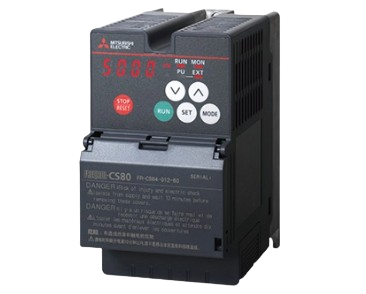

A good power supply system ensures maximum reliability and minimal downtime, but the growing complexity of supply systems and the use of battery backup can challenge DC control voltage stability. Issues like voltage fluctuations and drops can occur due to varying potentials or long transmission lines. Our DC/DC converters help you stay competitive, providing solutions that meet requirements for space efficiency, reliability, durability, and digital integration, including Industrial IoT capabilities. Designed for versatile applications, they offer robust performance for both domestic and international uses.
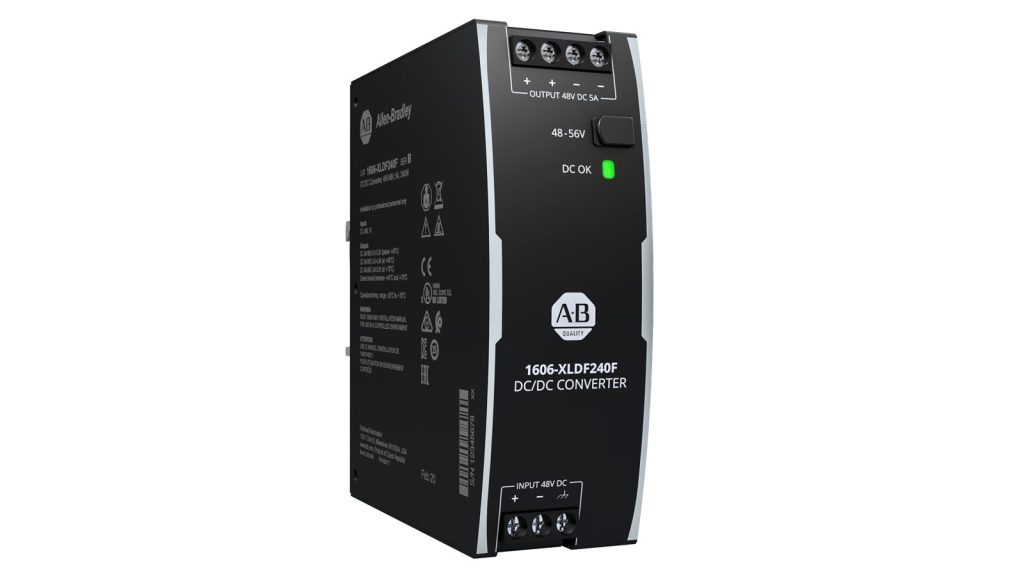
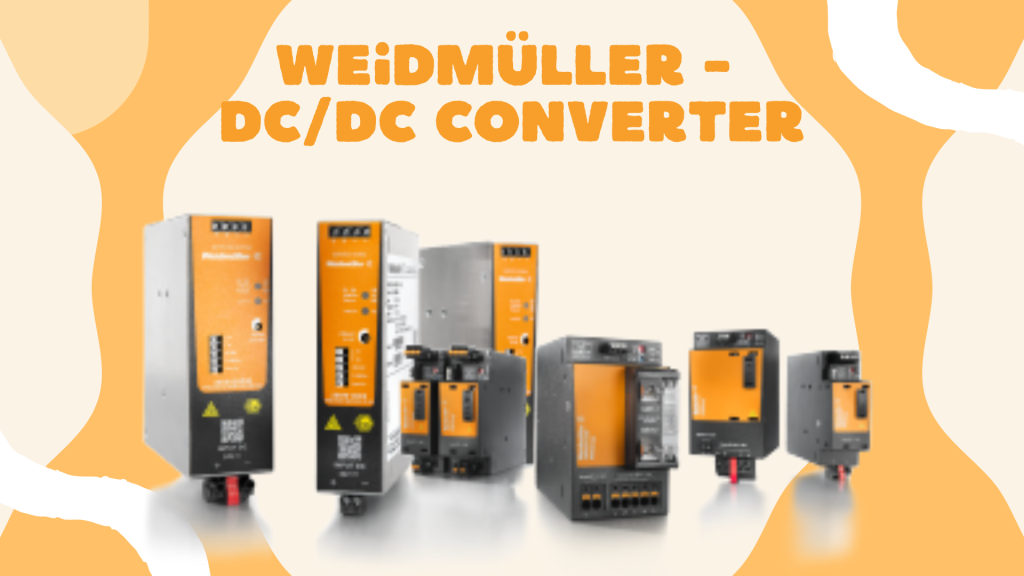
A reliable power supply system is defined by maximum uptime and minimal interruptions. However, as supply solutions grow more complex and battery backup systems become more prevalent, maintaining stable DC control voltage can be challenging. Issues like voltage fluctuations from varying potentials or drops over long cable distances can disrupt the supply.
The integrated ORing MOSFET ensures reliable isolation from potential internal short circuits, enabling direct parallel connection of PROtop series ACDC and DCDC converters for redundancy or increased performance. This eliminates the need for traditional diode or redundancy modules. Moreover, PROtop DCDC converters incorporate advanced DCL technology, while the communication module offers complete data transparency and remote management capabilities.
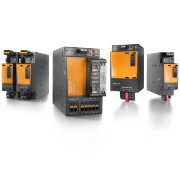
The PRO DCDC converters, featuring galvanic isolation and protection class III, are ideal for groundless and independent supply systems. These compact modules efficiently convert voltage levels while providing exceptional power performance, comprehensive safety features, and a high efficiency of up to 95%. Their space-saving design ensures easy integration into various applications, delivering a reliable and secure power supply in demanding environments.
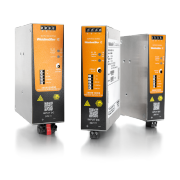
Whether upgrading an industrial system or improving energy efficiency in commercial or residential setups, these leading brands offer advanced inverters and converters that deliver reliable, high-performance solutions. Each company brings its specialized expertise to ensure that your business benefits from cutting-edge inverter and converter technology, setting new standards in power management and operational excellence.
Final Thoughts: The Future of Inverters and Converters in Power Control
As industries evolve toward smarter, more efficient energy use, inverters and converters will remain at the heart of this transformation. With ongoing innovations from partners like DEIF, Mitsubishi Electric, Rockwell Automation, and Weidmüller, businesses can lead the way in energy management, ensuring their operations are driven by the best in power conversion technology for sustained growth and efficiency.
